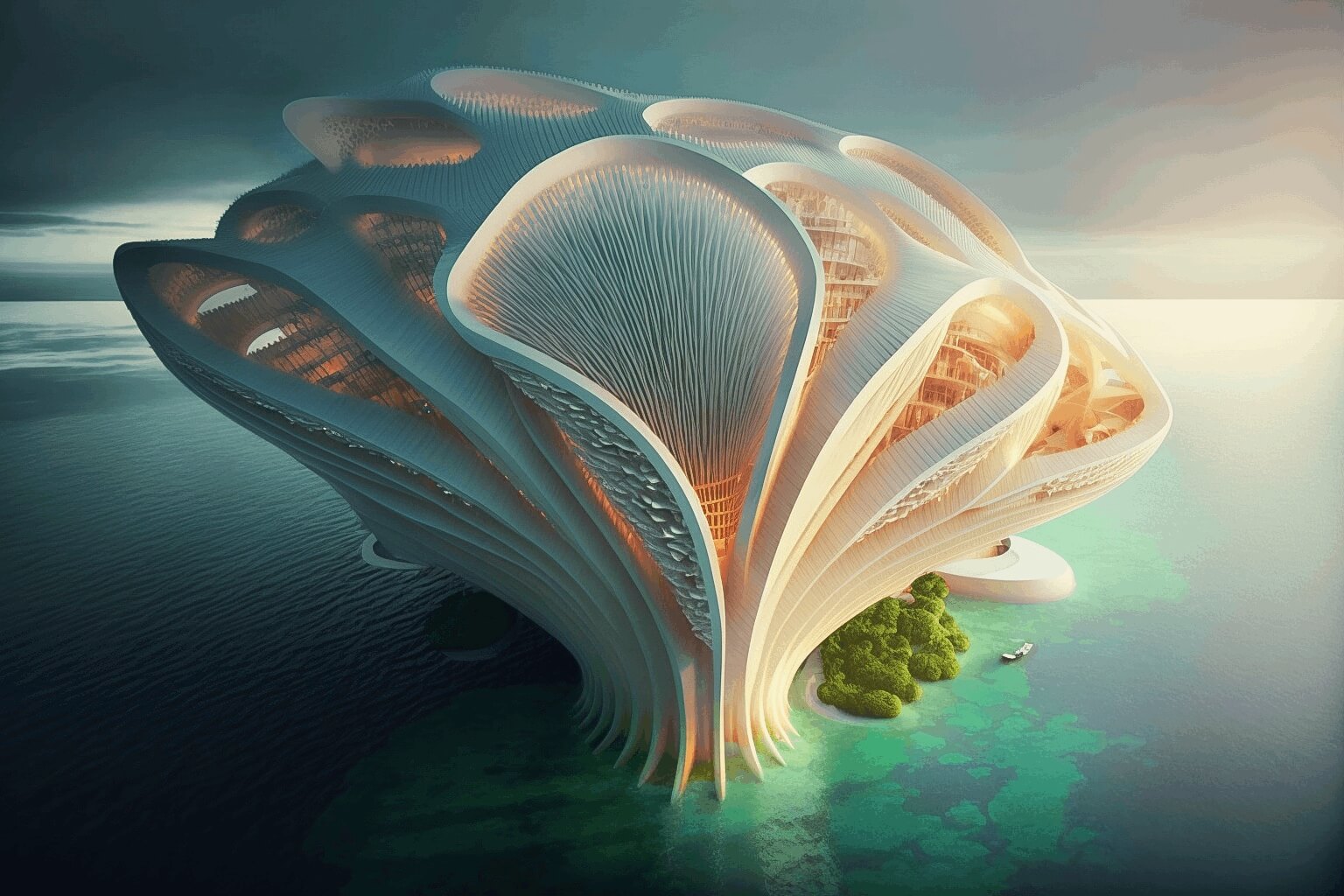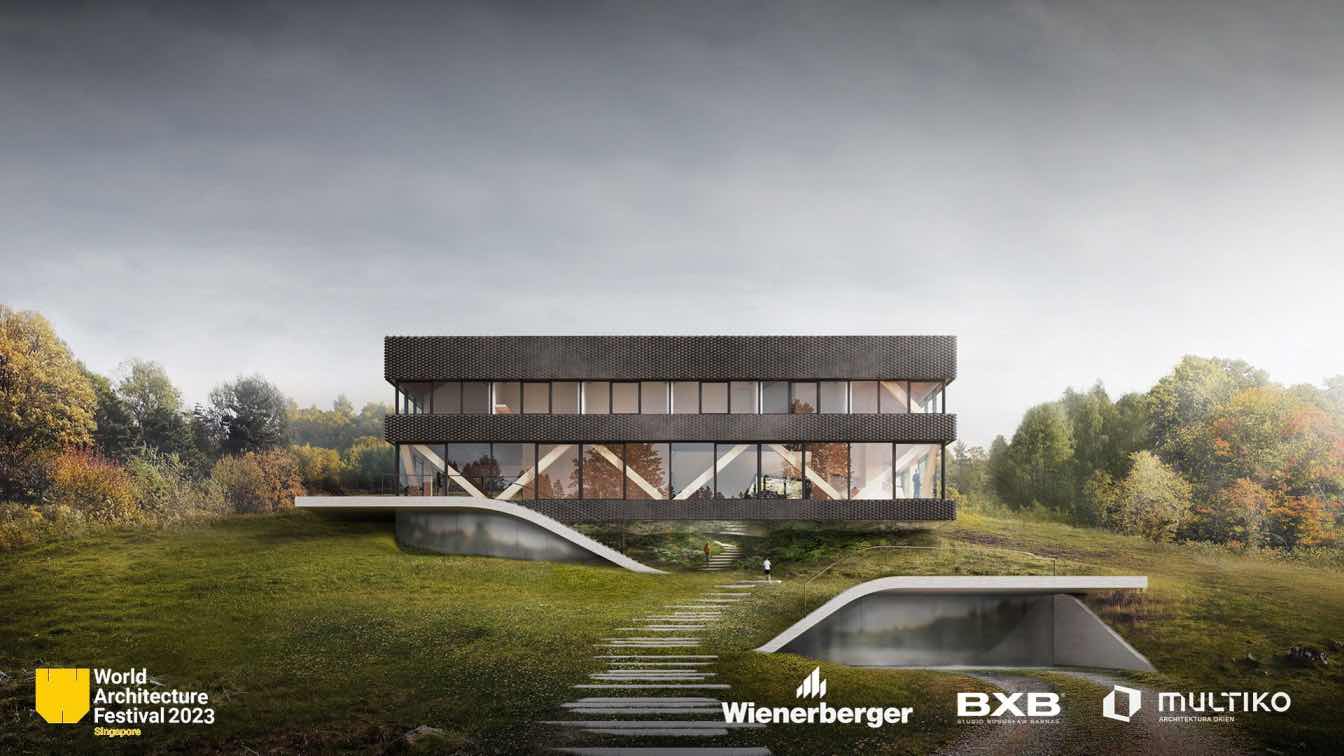The world is witnessing the transformation of artificial intelligence into a medium of creativity that is capable of generating remarkable works of visual and performance art, as well as writing. The use of AI is expanding rapidly, and its ability to acquire imagination and independent cognition similar to that of human beings is growing more sophisticated. The Arch Hive 2023 AI Architecture Competition was a platform that challenged entrants to create visualizations that incorporated nature into the built environment using AI imagery. The results were awe-inspiring and showcased the beauty and potential of AI architecture in pushing the boundaries of traditional design.
The theme of this competition was Artificial Nature. Arch Hive invited architects, designers, and technology enthusiasts to explore the potential of artificial intelligence in shaping the future of our built environment. Entrants were encouraged to push the boundaries of traditional built environment and utilize AI imagery to incorporate nature into otherwise mundane structures. The top entries drew on the full potential of AI assistance to push the boundaries of art and design, with some even suggesting potential adaptations to real world applications.
Let us now introduce to you these projects, which showcased the beauty and power of AI architecture.
First Place Winner
Whispering Curves: Igloo Pods in White Village by Hyejin Shin

Imagining the future after a cold dystopia, In collaboration with AI, we have designed igloo-shaped buildings with geometrically elegant and flexible curves situated on the white island and village of Antarctica.
This architectural design has been made with the optimal material for us to survive in the low-temperature climate change. The igloo-like structure draws inspiration from the traditional Inuit homes, made with ice blocks that provide insulation and warmth, and adapts it to the future world with advanced technology and design. The use of geometry not only creates a visually appealing aesthetic but also allows for efficient use of space and resources. The result is a harmonious blend of tradition, technology, and nature, presenting a hopeful vision of humanity's future in the face of climate change.

Jury Comment
“After careful consideration of all the entries, I have selected the submission that best exemplifies the potential of artificial intelligence in shaping the future of our built environment. This entry truly embodies the theme of the competition, Artificial Nature.
The submission takes a strong focus on site-specific design, responding to present and future global challenges through research by design and fine-tuned site-specific strategies. These exceptional scenarios, such as flooding, extreme cold or heat, high pollution, and health risk zones, to name a few, are going to be the next series of existential challenges, together with climate change, social inequity, labor shortages, broken supply chains, overpopulation, and so on. The submission, entitled “Whispering Curves: Igloo Pods in White Village“, Imagining the Future after a Cold Dystopia, reflects the challenge of Architecture in Extreme Environments. As mentioned in the entry, "The result is a harmonious blend of tradition, technology, and nature, presenting a hopeful vision of humanity's future in the face of climate change." I greatly appreciate the intention of using AI to investigate the artistic potential of working with technology, not only as a pragmatic-orientated design parameter but also as a process charged with proactive possibilities, aesthetic potential, and cultural sensibility, from building to detail in the extreme environment. The organic and parametric reinterpretation of the igloo-like structure aims to make thorough experimentation and artistic exploration with consideration of site and local culture and have a positive impact on our challenged world in a site-specific context such as the one proposed; a white island and village of Antarctica. Additionally, Architecture today often abandons site-specific knowledge and local design traditions that have allowed for sustainable and resilient environments. That is why I also appreciate the idea of the igloo-like structure drawing inspiration from traditional Inuit homes.
From a compositional standpoint, I appreciate the elegance and sinuosity of the building shapes and their integration with the surrounding nature. The buildings seem to be a natural extension of the natural environment. There is a great dialogue between the exterior and interior, and the detailing in the organic large windows is excellent and emphasizes the beauty of the surrounding landscape, demonstrating how AI and disruptive technology will be powerful tools to reconnect human beings with nature.” — Riccardo Piazzai
Second Place Winner
Hotel REEF by Opal Naomi Markus Ilan

Hotel REEF is a bio-structured building embedded in our oceanic ecosystem. The hotel is built as part of a reef that needed restoration and includes both over and underwater levels. The reef is the hotel and the hotel is the reef. The interior design is inspired by the complex and rich coral structures, and the outer part is an integral and continuous part of the coral reef formation.
The hotel is built using 3D printing where the skeleton is used as a platform for coral growth in order to increase biodiversity. A guest in the hotel will feel as if he is surrounded by marine life and is part of a living and growing system. The interior design of marine environments together with the ocean’s natural views will allow a meditative and relaxing atmosphere that only underwater presence can give.
I see a growing need for our society to strengthen its connection with nature and how we as humans use architecture to integrate with our surroundings. Bioarchitecture is an approach to designing buildings that are in harmony with nature. This growing field in architecture uses natural elements as part of the design and the main goal is to promote both functional and esthetic design that takes into consideration the urgent need to reduce the carbon footprint of human life.
Hotel Reef will allow new marine life to thrive as well as help reestablish the bond between humans and nature.

Jury Comment
“The unique characteristics about this design is the way it is inspired from the bio-structure and applied the organic structural morphology and brought it into the various design aspects from the exterior to interior and the furniture. The natural organism has an optimum structure and skeleton which is expandable and ability to grow through its evolution and this design tried to inspired from this aspect.
In terms of the visual quality, it is grateful to see the way designer push the boundary to find some architectural solution with bringing the marine life atmosphere in the practical spaces and implement the potential of the bio-morphology in the elements like ceiling features along with the proper lighting design that made it more adaptable to the spatial organization.
The designer has the proper understanding of AI generative process and its potential to create the overall architecture narratives from the exterior to interior design by integrating the deep-water environment and practical architecture and pushed the boundary to bring an unconventional atmosphere with diversity into the architecture space.
The score is given based on the way of using potential of AI generative process, the inspiration from deep water organism and the bio-structure and the integration of architecture and marine life.” — Meysam Ehsanian
Third Place Winner
Journeying through the Nexus of Aquatic Futurism, Paleobiology, Marine Life, and Ecological by Samuvel Benhursha

This odyssey offers a profound opportunity to reflect on our relationship with the natural world, as we embark on a quest to merge the worlds of aquatic futurism, paleontology, and environmental stewardship. By harnessing cutting-edge technology, we have the power to protect and save endangered marine life. As we journey together, let us cultivate a deeper understanding of our interconnectedness with all life and the responsibility we bear to protect it.

Jury Comment
“This entry builds on a very specific theme and a specific program, which shows a general intent in the process. AI here is used in a very interesting way: illustrating the "collective imagination" of deep marine life, always full of mysteries and present in a lot of novels - often just described in words. It actually turns this abstract universe into a formal language and creates architectural spaces. I think that the result really speaks to the theme. This entry showed how AI can bring formal inspiration at different scales, from the exterior massing of the building, interior spaces and façade details, but also exhibition experiences, as well as lighting strategies that put visitors that put visitors in spaces that resemble deep oceans.” — Guillaume Evain





